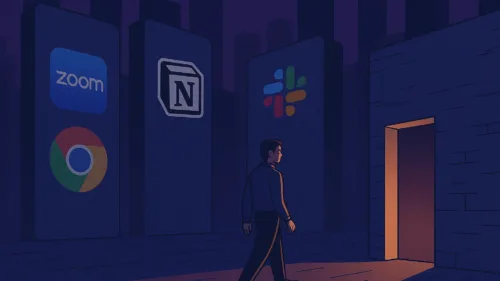The Rise of the Micro App: Why Smaller Software Is Winning

A quiet shift is happening in software.
Not loud. Not flashy. But powerful.
More and more, users aren’t asking for platforms that do everything—they’re looking for tools that solve one specific problem really well. And thanks to tools like generative AI, low-code, and no-code platforms, the barriers to creating those tools are disappearing fast.
This is the rise of the micro app.
The Problem With Big Apps
Venture-funded software is built for growth. That means one thing: scale.
And to scale, apps need to appeal to as many people as possible. So they keep adding features. Dashboards. Integrations. Widgets. The product roadmap gets bloated, stretched in a dozen directions by customer demands, investor expectations, and marketing campaigns.
The result? An app that kind of works for everyone but delights no one.
“Feature-rich and soul-poor.”
We’ve all used them. They can be clunky. Confusing. Exhausting to learn. Unintuitive. Built to maximize usage instead of delivering focused outcomes.
Enter the Indie App
Now contrast that with what’s happening on the edges of the industry.
A solo designer wants to streamline their creative process, so they build a little browser-based sketchpad with just the tools they need.
A hobbyist runner builds a training log that maps to their own style of marathon prep, not anyone else’s.
A homeschool parent builds a printable worksheet generator for a specific age group and subject area.
None of these apps were designed to scale. They weren’t designed to be everything to everyone. They were designed to work. For them. And by extension, for a small but passionate audience with the same needs.
And the tools that let them do this—AI, no-code builders, and vibe-coded prototypes—are exploding in accessibility and power.
“This is software as self-expression.”
Software Is Becoming Music
To understand where this is heading, it helps to borrow a metaphor.
Big apps are like major-label pop albums. Think Katy Perry. Lady Gaga. Produced by committee. Perfected in focus groups. Engineered to top the charts and hit the broadest possible audience.
Micro apps are indie records. Handmade. Imperfect. Sometimes brilliant. Often weird. But always honest. Built by someone who had something to say—and said it.
Spotify didn’t kill the music industry. It democratized it. And gave those indie creators a place to be found.
We’re now seeing that same energy start to build in software.
Why This Matters
The rise of micro apps signals a deeper cultural shift:
- We’re moving from mass platforms to personal tools.
- From building for “users” to building for yourself, first.
- From feature bloat to purposeful simplicity.
And it’s not just a design trend. It’s a statement.
It says: I made this for me, and for anyone else who thinks like me.
Which means the future of software might not be a few giant platforms dominating the landscape. It might be thousands of tiny, perfect tools, quietly thriving in their own little ecosystems.
The long tail is here. And it’s building micro apps.
And we should be paying attention.
